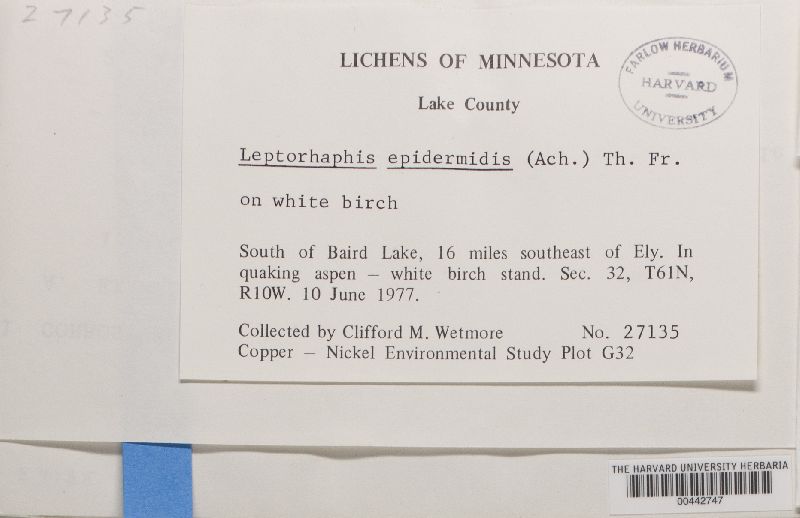
Consortium of Lichen Herbaria
- building a Global Consortium of Bryophytes and Lichens as keystones of cryptobiotic communities -
- Home
- Search
- Images
- Species Checklists
- US States: O-Z >
- US National Parks
- Central America
- South America
- US National Parks
- Southern Subpolar Region
|
Family: Naetrocymbaceae |
Nash, T.H., Ryan, B.D., Gries, C., Bungartz, F., (eds.) 2002. Lichen Flora of the Greater Sonoran Desert Region. Vol 1. Life habit: non-lichenized, saprobic or weakly lichenized Thallus: absent or crustose, mostly immersed in substrate, not well delimited upper surface: whitish gray to greenish, smooth, continuous photobiont: absent or facultatively a trentepohlioid alga Ascomata: perithecial, scattered singly or sometimes confluent, circular to ellipsoid, immersed or becoming superficial, ostiolate involucrellum: dark brown to greenish black, hyphae K-, clypeate, radiating hyphae sometimes extending to form a basal fringe; true ascomatal wall: black, not continuous below the hamathecium exciple: pseudoparenchymatous, colorless to pale brown, developed within the involucrellum, inconspicuous or not, continuous below the asci hamathecium: mostly unbranched pseudoparaphyses, not anastomosing, periphyses and periphysoids absent, hymenial gelatin hemi-amyloid (I+ yellowish orange to bluish green, never deep blue) asci: bitunicate, cylindrical to clavate or pyriform, with tholus, with a quite short-pointed apex, fissitunicate, non-amyloid, 8 (-16)-spored ascospores: hyaline, filiform, arcurate or sigmoid, 0-3-septate with eusepta, 1.5-3.5 x 20-45 micrometer; walls: not ornamented Conidiomata: pycnidial, immersed to semi-superficial, hemispherical to spherical conidia: colorless, producing both macroconidia (almost size and shape of the spores) that are acicular-fusciform, arcuate and smooth and microconidia that are bacilliform to fusiform Secondary metabolites: absent Geography: mostly temperate in the Northern Hemisphere Substrate: only on bark. Notes: It is separated from other pyrenocarpous genera by its acicular-fusiform ascospores. |
Powered by Symbiota









